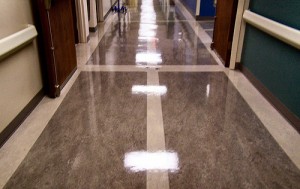The hospital sector is capable of yielding four times of the revenue generated by the hotel industry for the same amount of investment, a leading hospital management expert told the Hotel Show Dubai 2013 at the Dubai World Trade Centre on Sunday.
The cost of putting up a hospital bed is almost the same as the cost of creating a room in a five-star hotel, but there is a huge difference in the revenue potential of the two, he pointed out.
The potential for investments in hospitals was highlighted by Raza Siddiqui, CEO of Arabian Healthcare Group, while making a presentation on the medical tourism potential of Dubai and the UAE. Dubai, in particular, offers great scope for investments in high-quality medical infrastructure, he pointed out.
According to Department of Tourism and Commerce Marketing (DTCM) estimates, 10 million tourists visiting the UAE, spending an average 3.8 days in 80,000 hotel rooms, generate Dh20 billion-revenue. This makes an average of Dh 250,000 per bed for a regular hotel and Dh500,000 for a five-star hotel annually. The total investment required for creating a room in a five-star property is estimated at Dh 2 million, which is roughly the project cost required for putting up a hospital bed in a premium hospital.
“While the average revenue per bed in a five-star hotel is Dh500,000, the average revenue per bed in a premium hospital is Dh2 million per year. That is the kind of difference in revenue yields, although the cost of creating the two facilities is the same,” Siddiqui pointed out.
Given Dubai’s superior hospitality sector and its excellent healthcare infrastructure, the Emirate is in a strong position to develop medical tourism as a major component of its tourism industry. There is a need and the opportunity for investing in 5,000 new hospital beds, Siddiqui said.
According to him, out of the 40 million transit passengers at the Dubai airport, on an average 1,500 to 2,000 patients daily change flights to travel to medical tourism destinations daily. With Dubai’s excellent hospitality and healthcare infrastructure, it should be possible to attract some of them to seek treatment here.
“Medical tourism can complement the thriving tourism industry in the region. If the Emirate targets even 500,000 medical tourists per year, the revenue contribution can be in the region of Dh10 billion, which is 50 per cent of the earnings by the tourism industry,” Siddiqui said.
“Dubai can hope to position itself alongside Singapore and Thailand, both of which offer quality healthcare and good hospitality infrastructure. India has good healthcare, but it is not so good in terms of hospitality. Dubai has very good hospitality and good healthcare,” he said.
India is among the countries that receive one million or more medical tourists in a year, the others being Thailand, Mexico, US and Singapore.
India is expected to receive one million medical tourists this year with an annual spend of $5 billion, making an average of $5,000 per patient. According to McKenzie projections for 2013, the regional market for medical tourism is worth $20 billion out of a total industry size of $100 billion.
The global medical tourism market is estimated to grow with a compounded annual growth rate of 9.5 per cent from 2012 to 2018. Over 50 countries have identified medical tourism as a national industry. ___
Visit the Khaleej Times (Dubai, United Arab Emirates) at www.khaleejtimes.com
Distributed by MCT Information Services
source: http://www.medcitynews.com / MedCity News / Home> Hot Topics: Health Data / October 07th, 2013


